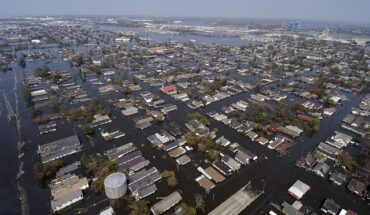Tornadoes are one of the most terrifying and destructive natural disasters on Earth. These violent windstorms can strike with little warning, leaving a trail of devastation in their wake. While we cannot prevent tornadoes, we can certainly take steps to prepare our families for the worst. In this comprehensive guide, we will delve into essential tips and strategies to ensure your family’s safety in the event of a tornado. Let’s start learning how to prepare for a tornado.
Understanding the Tornado Threat
Before we delve into preparation strategies, it’s essential to understand the tornado threat itself. Tornadoes are violent, rotating columns of air that extend from thunderstorms to the ground. They can reach speeds exceeding 300 mph, causing massive destruction. Tornadoes typically form in regions where warm, moist air collides with cold, dry air, such as the central United States.
How To Prepare For A Tornado
- Stay Informed: Knowledge is your first line of defense. Sign up for weather alerts and notifications on your smartphone. Invest in a NOAA Weather Radio for real-time updates from the National Weather Service.
- Know the Terminology: Familiarize yourself with tornado-related terms. An understanding of terms like “tornado watch” (conditions are favorable for tornadoes) and “tornado warning” (a tornado has been spotted or indicated by radar) can help you react appropriately.
- Create a Family Emergency Plan: Sit down with your family and create an emergency plan. Designate a safe meeting place within your home and establish an out-of-town contact person who can act as a communication hub in case family members get separated.
- Prepare an Emergency Kit: Assemble a tornado-specific emergency kit that includes essential items such as non-perishable food, water, flashlights, batteries, a first-aid kit, blankets, and important documents. Ensure each family member knows where the kit is located.
- Secure Your Home: Strengthen your home’s structural integrity. Install storm shutters or reinforce windows. Anchor heavy furniture and appliances to prevent them from becoming dangerous projectiles. Consider building a safe room or tornado shelter if you live in a tornado-prone area.
- Practice Tornado Drills: Just like fire drills, practice tornado drills with your family. Make sure everyone knows where to go within the home when a tornado warning is issued.
- Designate a Safe Space: Identify a safe space in your home where your family can take shelter during a tornado. Basements, storm cellars, or interior rooms on the lowest floor are typically the safest options.
- Stay Informed: Stay informed about the weather situation as it unfolds. Pay attention to local news, weather radio broadcasts, or smartphone apps that provide up-to-date information.

My Medic The Recon First Aid Kit
Features of the My Medic The Recon First Aid Kit – Standard Hand-picked by first responders and medical pros Durable materials made to military standards Over 250 quality first-aid and trauma supplies in pro kits HSA/FSA approved
During a Tornado Warning
When a tornado warning is issued for your area, quick and decisive action is crucial. Here’s what you should do:
- Seek Shelter Immediately: Head to your designated safe space without delay. If you don’t have a basement or storm cellar, go to an interior room on the lowest floor, such as a bathroom or closet, away from exterior walls and windows.
- Cover Up: Protect yourself and your family by using available resources. Cover yourselves with mattresses, heavy blankets, or even a bicycle helmet to shield against flying debris.
- Stay Informed: Keep a battery-powered weather radio or portable device with you to stay informed about the tornado’s progress and when it’s safe to come out of your shelter.
After the Tornado Passes
Once the tornado has passed, the danger isn’t necessarily over. Follow these steps for post-tornado safety:
- Assess Injuries: Check for injuries within your family and administer first aid as necessary. If someone is seriously injured, call 911 immediately.
- Beware of Hazards: Be cautious when exiting your safe space. Watch out for broken glass, sharp objects, and unstable structures.
- Stay Informed: Continue to monitor weather updates. Tornadoes can be followed by severe thunderstorms or additional tornadoes.
- Account for Family Members: Make sure all family members are safe and accounted for. Contact your designated out-of-town contact person to confirm everyone’s well-being.
- Assist Neighbors: If it’s safe to do so, check on your neighbors and offer assistance if needed. This is a time when community support can make a significant difference.
- Document Damage: Take photographs or videos of any damage to your property. This documentation can be useful when filing insurance claims.
Conclusion
Tornado preparedness is not an option; it’s a responsibility that every family should take seriously. By staying informed, having a solid plan in place, and practicing tornado drills, you can greatly increase your family’s chances of staying safe during a tornado event. Remember that preparedness is an ongoing process, and it’s crucial to revisit and update your plan and emergency kit regularly. While we cannot control when or where tornadoes will strike, we can control how well we are prepared to face them. Your family’s safety is worth the effort, so take action today to ensure a brighter, more secure tomorrow.
Reading More
Learn how to build a survival shelter in this article. Reading maps is an important tool to learn. Here is an article from Pack & Paddle Expedition Co that discusses true north and declination.















